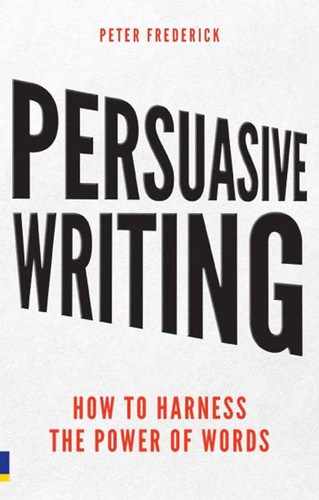Appendix 6 Exploiting and countering human decision-making
Chapter 3 presented many psychological techniques. This appendix gives you a handy reminder of how to exploit or counter their effects in your writing.
Primacy – people form opinions on first impressions and remember early information better.
Exploit: summaries or abstracts; attention-grabbing headlines; go first if multiple views are presented.
Counter: if someone else has got their view in first, use recency and put your point last.
Availability – information more easily recalled has more influence in decision-making.
Exploit: shock the reader; relate your point to their personal experiences; tell stories: grab their attention though your document layout; use primacy and recency.
Counter: present counter-anecdotes; confront the misconception (e.g. “I used to think this too but . . .”); cast doubt on the available evidence.
Consistency – once people have made up their mind, it is very difficult to change it. This is due to:
- sunk-cost bias – actual loss is more painful than potential loss;
- rationalisation – brain rewards you for twisting evidence to suit your existing views;
- confirmation bias – you only seek out evidence which agrees with your beliefs;
- social pressure – consistency is seen as strong.
Exploit: seek decisions from those who already agree; highlight investment so far; make confirmation points easy to find; praise the reader for consistency.
Counter: point out future savings; show how things have changed since opinion was formed (they didn’t make a bad decision at the time); make confirmation hard to find; use analogies to show they would hold a different view in similar circumstances; show their social superiors agree with you.
Justification and evidence – people like to know why, even when the ‘because’ isn’t that convincing; when deciding, it is easier to compare proportionately than exactly.
Exploit: explain why the reader should make a particular decision; present comparisons proportionately wherever possible.
Counter: own up to a lack of evidence but appeal to their feelings and intuition (everyone loves to think they have good intuition so flatter them); show how any gamble has a very low cost; compare actual losses/gains if you are proportionately weaker.
Simplicity – people constantly seek the easy life and will convince themselves of a potential short cut’s likely success.
Exploit: show how the decision you want makes their life easier. Find the decision-maker’s particular pet hates and see if you can reduce them through your favoured decision. Offer additional benefits if needs be.
Counter: draw comparisons with other ‘too good to be true’ situations. Use examples and analogies to show success only comes from the long, hard route.
Loss and reward – we over-value what we have; if we make a quick decision we’ll take the smaller, quicker reward; we aren’t good at linking short-term gains with long-term cost; our brains do a crude subconscious cost/benefit analysis.
Exploit: offer short-term gains; emphasise what will be lost by making the wrong decision; make costs appear smaller than they are; show other attractive options to encourage the desire to choose something.
Counter: draw attention to long-term costs, avoid talking about costs/losses of your choice until subconscious decision is made.
Outside influences – people will look to others to help with the decision; people are most influenced by experience, conformity and aspiration.
Exploit: use references from people your reader will admire; create the appearance of expertise; show that everyone else is doing it.
Counter: encourage the reader to be an individual.
Repetition – find different ways to make the same point.
Anchoring – the brain will use nearby data for comparison if it doesn’t have anything better.
Exploit: include consistently large or small numbers before your number to make it look better in comparison.
Counter: pay attention to the numbers surrounding your costs – eliminate numbers if necessary.
Halo/horns effect – if you are well-known for one good trait, you are assumed to be good in other traits and vice versa.
Exploit: use famous people as social proof; build a reputation for doing one thing brilliantly.
Counter: acknowledge your own reputation and show how things have changed; for rivals, use analogies to show how one good trait doesn’t equal all-round competence.
Recency – the last thing read sticks in the mind; people are most likely to choose the last of three choices.
Exploit: give readers three choices with your favoured option at the end; write a concluding summary; try to get your opinion in last.
Counter: if you can’t go last, go first; move unpleasant information to the middle or appendices.
